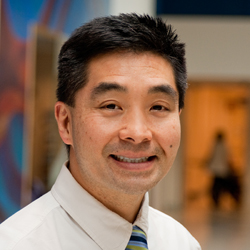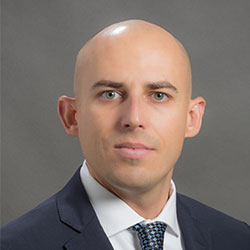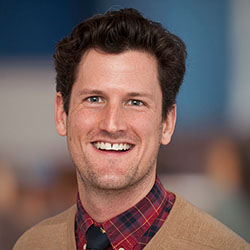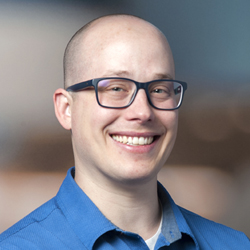Clubfoot
What is clubfoot?
Clubfoot is a foot that points down and in. In babies with clubfoot, their toes point toward the other leg, and the bottoms of their feet face inward. In some cases, it looks like the baby’s foot is upside down.
A clubfoot cannot be straightened simply by moving it around. The and on the inside and back of the foot and ankle are shorter than usual. Those on the outside and front are stretched out. This holds the baby’s foot in its unusual position.
Clubfoot does not get better on its own. If it is not treated, it can cause discomfort and keep your child’s foot from working well as they grow up. But with treatment, there is an excellent chance that your baby’s foot will look good and work very well.
About half of children with the condition have 2 clubfeet (bilateral clubfoot). Another name for clubfoot is talipes equinovarus (pronounced TAIL-ih-pees ek-win-oh-VAIR-is).
What causes clubfoot?
About 1 in every 1,000 babies is born with clubfoot. Clubfoot does not have anything to do with the baby’s position in the womb. It is mostly a condition passed from parents to children, and it may run in families. If you have 1 baby with clubfoot, the chances of having a second child with the condition are about 1 in 40.
Children with certain and conditions are more likely to have clubfoot. Most times, children who have clubfoot are otherwise completely healthy.
What are the symptoms of clubfoot?
At birth, the baby’s foot or feet are turned down and in. They can’t be straightened just by trying to move the feet.
How is clubfoot diagnosed?
Clubfoot prenatal diagnosis
Doctors can see clubfoot on images taken after about 4 months of pregnancy. So, many families first learn about the diagnosis before their baby is born. If this happens, our team at Seattle Children’s is here to provide prenatal consultations. We’ve worked with many families who received a clubfoot diagnosis prenatally. We can explain your baby’s condition, describe what their treatment will be like step by step, answer your questions and help you prepare.
Diagnosis after birth
At birth, a doctor will examine your baby’s feet, arms, hands, hips and legs.
Babies who have a clubfoot are no more likely than other children to have other bone or joint problems unless they have an underlying condition such as or .
How is clubfoot treated?
We treat clubfoot with the Ponseti method, using casts and braces, and are approved practitioners of this treatment approach. The Ponseti method corrects the problem with the least amount of surgery and sometimes with no surgery at all.
Ponseti method for clubfoot
- Ignacio Ponseti developed the Ponseti treatment method for clubfeet at the University of Iowa many decades ago. This method corrects most clubfeet without major surgery, a big change from treatment methods that were common at the time of Dr. Ponseti’s initial work. Because the Ponseti method works well over the long term, it is the leading treatment for clubfoot around the world.
- Our doctors were among the first outside of Iowa to learn the method directly from Dr. Ponseti. We were the first in the Northwest to offer the Ponseti method for clubfoot.
- We have been leaders in teaching the technique to other at national and international conferences, as well as through publications.
- To read more about the Ponseti method, visit Global-HELP, a nonprofit health information website started by the former director of our Department of Orthopedics, Dr. Lynn T. Staheli.
Beginning treatment
- We begin gently stretching your baby’s foot toward the correct position soon after birth. After about a 1-minute stretch, we apply a cast that goes from the hip to the toes.
- We work with your baby each week, gently stretching the foot farther and putting on a new full-leg cast.
- After 4 to 8 weeks of treatment, about 5% to 10% of babies’ clubfeet are completely corrected. Most other babies need a simple procedure in the clinic to release the tight tendon at the back of their ankles (). These babies wear a final cast for about 3 weeks.
Ongoing treatment with a brace
- After your baby’s foot is in the correct position, they wear a brace nearly all the time for the next 3 months. Then they wear a brace at night and nap times for 3 to 4 years. The brace, made of leather shoes connected by a metal bar, turns your child’s feet outward.
- It is important to use the brace to make sure your child’s feet stay in the new position. Otherwise, clubfoot is likely to come back. Read more about braces and our other orthotics and prosthetics services.
- After this treatment, most children need no further treatment. About 2 or 3 children in every 10 will need a minor surgery after age 3 to adjust their tendons.
Partnering with your care team
- Your participation during treatment with the Ponseti method is very important. If your child doesn’t wear the brace as directed, the clubfoot is likely to return.
- Our doctors and staff are ready to help you with all aspects of the treatment method, including how to care for a baby in casts and braces. We have helped hundreds of families whose children are having Ponseti clubfoot treatment. We are ready to share our expertise and extensive experience with you.
Surgery for clubfoot
- The Ponseti method doesn’t work in about 5% to 10% of babies with clubfoot. These children may need major surgery. We recommend surgery only when we believe it will give your child the best results.
- For those who need surgery, we are very experienced in the most effective techniques. We have pediatric orthopedic surgeons with expanded fellowship training in foot and ankle conditions.
- After surgery, physical therapy can help a child become able to place their feet flat on the floor and learn to walk with the feet in this new position. We have the largest team of physical therapists in the Pacific Northwest who specialize in the care of babies, children, teens and young adults.
Seattle Children’s Clubfoot Clinic
For decades, orthopedic surgeons at Seattle Children’s have treated more children with clubfeet than any other center in the Northwest.
Why choose Seattle Children’s for clubfoot treatment?
- Advanced and safe treatments: As techniques to treat clubfoot have changed, we’ve been leaders in learning, using and promoting the latest advances. We avoid tests and procedures your child doesn’t need and limit any radiation from imaging.
- Collaborative care with a holistic approach: Working closely with you and your child’s referring doctor, we design a treatment plan that’s custom-made for your child. We consider all aspects of your child’s well-being and coordinate care across specialties.
- Research to improve results for kids: Seattle Children’s takes part in national studies to refine clubfoot treatment and improve results for children with this condition. We’re also active in the international Pediatric Foot Research Group for experts studying foot and ankle differences in children.
Meet Your Team
Our Clubfoot Clinic is part of Orthopedics and Sports Medicine. The team includes experienced pediatric orthopedic surgeons, , and nurses who know how to evaluate and treat all types of foot and ankle conditions.
Clubfoot Resources
For healthcare professionals
Contact Us
Contact Orthopedics and Sports Medicine at 206-987-2109 for an appointment, a second opinion or more information.
Providers, see how to refer a patient.




